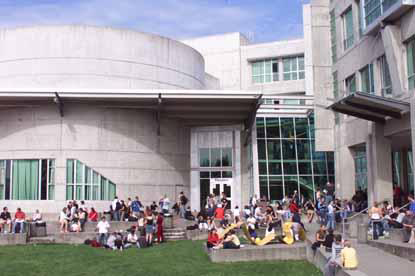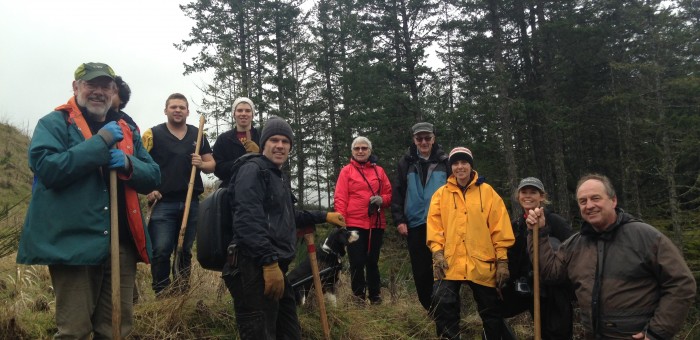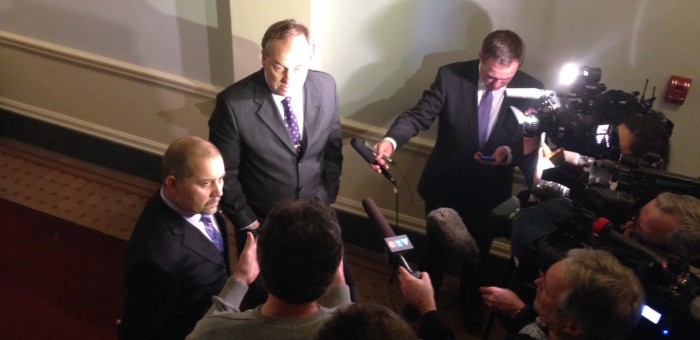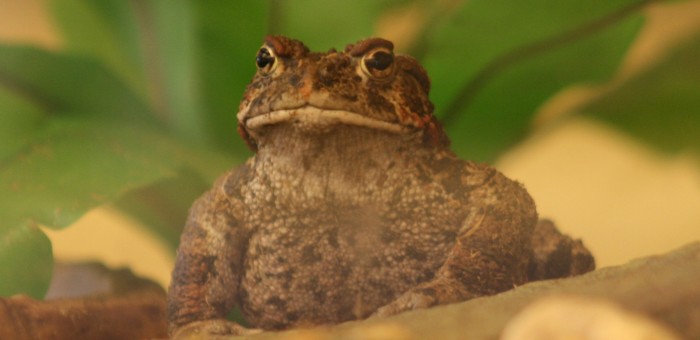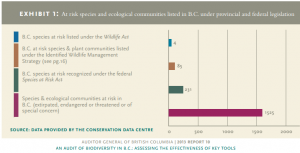Post-Secondary Sexual Violence Policies Act
Media Release: March 8th, 2016
Andrew Weaver Tables Post-Secondary Sexual Violence Policies Act
For Immediate Release
Victoria, B.C. – Today at the B.C. Legislature, Andrew Weaver, MLA for Oak Bay – Gordon Head and Leader of the B.C. Green Party, tabled the Post-Secondary Sexual Violence Policies Act, a bill that aims to address the pervasive occurrence of sexualized violence plaguing universities and colleges in British Columbia.
“It is estimated that one in four female university students will be sexually assaulted during the relatively short amount of time they spend on campus,” said Andrew Weaver. “It is unacceptable that we are not taking clearer steps as a Province to help create a safe environment for our students.”
Sexualized violence is an issue that impacts all genders and all ages. Being young and female, however, are the biggest risk factors for being sexually assaulted.
“The opportunity to succeed and thrive in university shouldn’t hinge on whether or not you are young, female and statistically likely to experience sexual violence,” said Weaver. “A staggering number of bright young women pursuing their academic ambitions are forced to deal with the threat of sexualized violence. It’s time for our government and universities to stand up and say enough is enough.”
Weaver brought forward the Post-Secondary Sexual Violence Policies Act to create a legal responsibility for universities and colleges in British Columbia to develop and maintain policies that would provide education for students, support for victims, and work to prevent the occurrences of sexual violence. The act would allow University specific policies to be developed that would meet the needs of students, including education and protection, while working to create a safe environment for students to come forward to report a sexual assault.
“The reality is that it is women who are most vulnerable at post-secondary institutions to being sexually assaulted or harassed, and that there simply isn’t the capacity for adequate prevention and support,” said Weaver. “While I chose International Women’s Day to table this bill, this is a societal issue and one that affects people of all gender identities. I hope our work will improve the safety of post-secondary experiences for everyone.”
-30-
Media Contact
Mat Wright – Press Secretary Andrew Weaver MLA
1 250 216 3382
mat.wright@leg.bc.ca
Shawnigan Lot 21 Soil Sample Results
Late last week I received the results from the soil samples I collected on Lot 21 during the period that title reverted to the Crown.
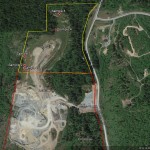 As I discussed earlier, I collected a total of fives samples from five separate locations on Lot 21 (see image above left for precise locations). Since automated drilling instruments were not allowed under FLNRO policy on Crown Land Use Policy, we used shovels to dig the five samples at depths of 28″, 14″, 15″, 22″ and 0″, respectively,
As I discussed earlier, I collected a total of fives samples from five separate locations on Lot 21 (see image above left for precise locations). Since automated drilling instruments were not allowed under FLNRO policy on Crown Land Use Policy, we used shovels to dig the five samples at depths of 28″, 14″, 15″, 22″ and 0″, respectively,
The soil samples were analysed by Maxxam Analytics for Volatile Organic, Total Hydrocarbon and Elemental Metal analyses. The results are now available. While I recognize that my approach of taking a few samples is a bit like looking for a needle in a hay stack, the good news is that both volatile organic and total hydrocarbon content were below detectable levels in all samples.
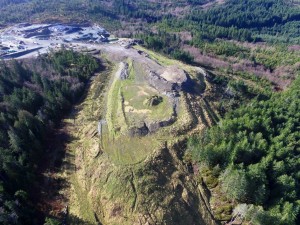 As indicated in the Residential/Parkland column of the Soil Quality Guidelines of the Canadian Council of Ministers of the Environment, the only sample that revealed above-recommended values was Sample #3. In this case both Zinc and Copper were over the guidelines.
As indicated in the Residential/Parkland column of the Soil Quality Guidelines of the Canadian Council of Ministers of the Environment, the only sample that revealed above-recommended values was Sample #3. In this case both Zinc and Copper were over the guidelines.
While my tests are by no means exhaustive and do not address the fundamental question as to what, if anything, is buried deep under the surface in Lot 21, they add to the body of knowledge concerning the area.
Calling for more ambition in Federal approach to climate
Media Statement: March 03, 2016
Andrew Weaver calls for more ambition in Federal approach to climate
For Immediate Release
Victoria, B.C. – Recognizing the positive step forward that has been taken in bringing together the Premiers of Canada to work on a climate plan, Andrew Weaver, Leader of the B.C. Green Party and MLA for Oak Bay-Gordon Head, says the agreement today is more about good political optics, than about substantive climate policy.
“We don’t meet our targets without a price on carbon. Pure and simple,” says Weaver. “While I recognize that federal leadership has been lacking for the last decade, and that coming together to try and unite our country around climate action is a significant improvement, in reality this agreement postpones any nation-wide action for at least six months.”
“At the end of the day we don’t need a plan to create a plan,” says Weaver. “Our Prime Minister promised to work out a national climate strategy within 90 days of Paris and that didn’t happen today. We need action and firm commitments. Investments in green infrastructure is good news, but carbon pricing is what is ultimately needed.”
“Climate action in British Columbia has also been stalled under Premier Clark,” said Andrew Weaver. “No substantive new climate action has been taken, and GHG emissions are once again on the rise. Leader’s lead. They don’t wait for others to catch up.”
-30-
Media Contact
Mat Wright – Press Secretary Andrew Weaver MLA
1 250 216 3382
mat.wright@leg.bc.ca
Toad Road yet no Abode
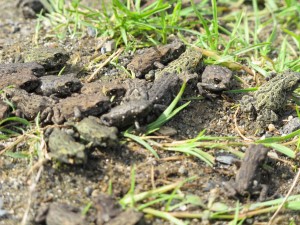 Given the myriad challenges facing wildlife in our province, one of the best things we can do to protect biodiversity in B.C. is to leave key habitat areas intact. As the global climate warms and precipitation patterns shift, having a complete ecosystem within which animals and plants can try to adapt will be essential, and frankly the least we can do given the dire situation many species are in.
Given the myriad challenges facing wildlife in our province, one of the best things we can do to protect biodiversity in B.C. is to leave key habitat areas intact. As the global climate warms and precipitation patterns shift, having a complete ecosystem within which animals and plants can try to adapt will be essential, and frankly the least we can do given the dire situation many species are in.
This is not news to the government, of course. For species ranging from mountain caribou to spotted owls and goshawks, the Ministry of Environment is quick to reference habitat loss as a contributing, if not the main, factor in population declines:
“human activities associated with resource extraction are the ultimate threats to caribou in British Columbia. Human development fragments and alters caribou habitat…“
“[The spotted owl] is at risk in this province because much of its habitat has been adversely affected by logging or lost due to land development.“
“The laingi subspecies of Northern Goshawk requires large areas of old-growth and mature forest. Large-scale timber harvesting removes much suitable nesting and foraging habitat… Because of this, the laingi subspecies is believed to be in jeopardy, and is on the British Columbia Red List.“
Likewise, the government cites habitat destruction as one of the greatest impacts on western toad populations in B.C.
“Development in and around wetlands can destroy or isolate populations.“
To a lesser extent, though still of importance, migrating toads are often killed by traffic as they try to cross roads.
Western toads are considered a species of conservation concern by the government of British Columbia and have been designated a status of special concern by the Committee on the Status of Endangered Wildlife in Canada (COSEWIC). In theory, they are protected under the B.C.’s Wildlife Act.
While BC has the most biodiversity in Canada, it is also one of two provinces (the other being Alberta) that has no provincial endangered species legislation. Sadly, BC is the home of more than 1,500 species currently at risk of extirpation or extinction.
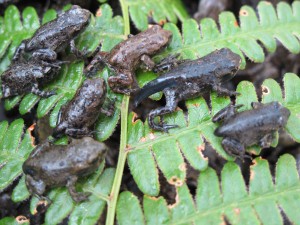 Summit Lake, just outside the village of Nakusp in the Kootenay region, is a key breeding area for western toads. Every year, usually around the end of August, young toadlets migrate from the shoreline of Summit Lake, across Highway 6, to upland habitat where they will live for four or five years before they return to the lake to breed. The mass migration sees upwards of a million little toads attempting the crossing, with tens of thousands getting run-over in the process.
Summit Lake, just outside the village of Nakusp in the Kootenay region, is a key breeding area for western toads. Every year, usually around the end of August, young toadlets migrate from the shoreline of Summit Lake, across Highway 6, to upland habitat where they will live for four or five years before they return to the lake to breed. The mass migration sees upwards of a million little toads attempting the crossing, with tens of thousands getting run-over in the process.
Hoping to help, nearby communities hold an annual Toadfest where people carrying the migrating western toads from the curb to the forest in buckets. The provincial government has also tried to address the problem by building directional fences leading to toad tunnels that allow the toads to safely cross under the highway. This amounts to an innovative solution and $200,000 investment in the protection of an increasingly threatened species. In the Ministry of Transportation and Infrastructure’s employee newsletter about their work they described the mass movement of western toads from Summit Lake to the forest as “among the great wildlife migrations in the world.”
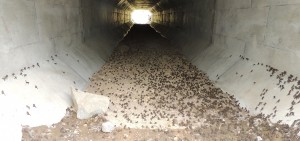 Unfortunately, the story doesn’t end there. After being safely escorted across the highway, via toad tunnel or bucket, the toads will now find themselves in a forest slotted for logging. Road building began last week and there are plans in the works to clear cut the 30 hectares where the toads hibernate.
Unfortunately, the story doesn’t end there. After being safely escorted across the highway, via toad tunnel or bucket, the toads will now find themselves in a forest slotted for logging. Road building began last week and there are plans in the works to clear cut the 30 hectares where the toads hibernate.
To their credit, the Nakusp and Area Community Forest (NACFOR) logging company has drafted a toad management plan and identified small habitat features that they’ll try to leave intact. I commend NACFOR for exploring ways in which they can continue to harvest the timber while also being mindful of this species of special concern, but it is really the government that should be in the leadership role here.
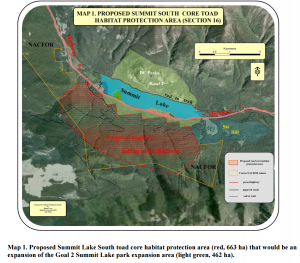 Protection of core terrestrial habitat – defined as “the spatial delineation of 95% of the population that encompasses terrestrial foraging, breeding, and overwintering habitats rather than buffers” – is seriously recommended in the scientific literature for amphibians (Semlitsch and Bodie 2003, Browne and Paszkowski 2010, Crawford and Semlitsch 2007). If the existing provincial park at Summit Lake were expanded to include the forest within roughly two kilometers of the lake the protection of core terrestrial habitat would likely be achieved, wildlife biologist Wayne McCrory said in his analysis of the situation.
Protection of core terrestrial habitat – defined as “the spatial delineation of 95% of the population that encompasses terrestrial foraging, breeding, and overwintering habitats rather than buffers” – is seriously recommended in the scientific literature for amphibians (Semlitsch and Bodie 2003, Browne and Paszkowski 2010, Crawford and Semlitsch 2007). If the existing provincial park at Summit Lake were expanded to include the forest within roughly two kilometers of the lake the protection of core terrestrial habitat would likely be achieved, wildlife biologist Wayne McCrory said in his analysis of the situation.
The province has been criticized for failing to set aside adequate habitat to protect caribou, spotted owls and goshawks and this toad situation illustrates just how reluctant the B.C. government is to remove forest from the logging land base. The key western toad forest habitat around Summit Lake is a relatively small, very specific area that could be included into the existing provincial park. This would represent a minor exemption from their 9,816 hectare total operating base.
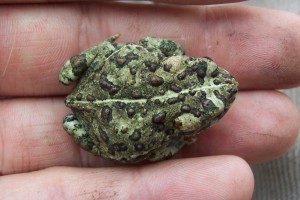 The creation of the toad tunnel represented an admirable step forward for the government’s approach to wildlife issues. Granting approval to log their core terrestrial habitat represents more of a smoking bulldozer ride back – squashing all their advancements in the process.
The creation of the toad tunnel represented an admirable step forward for the government’s approach to wildlife issues. Granting approval to log their core terrestrial habitat represents more of a smoking bulldozer ride back – squashing all their advancements in the process.
“Be an advocate for amphibians – protect toads and their habitat in your neighbourhood,” reads the government’s BC Frog Watch website.
Good advice, that I respectfully urge the BC government to follow by protecting western toad habitat around Summit Lake before it’s too late.

